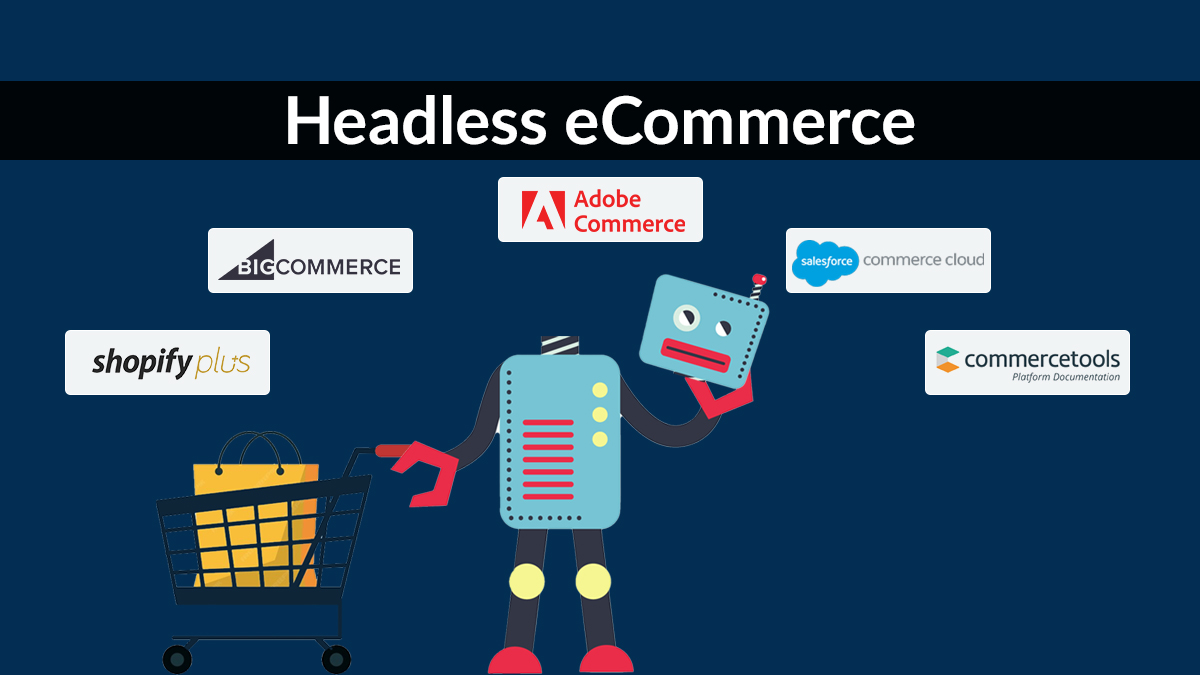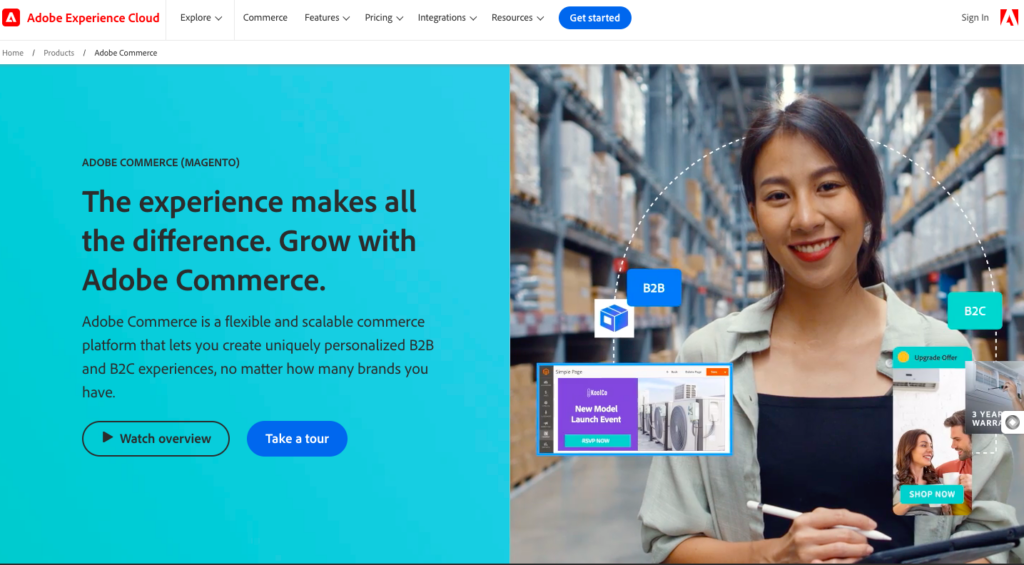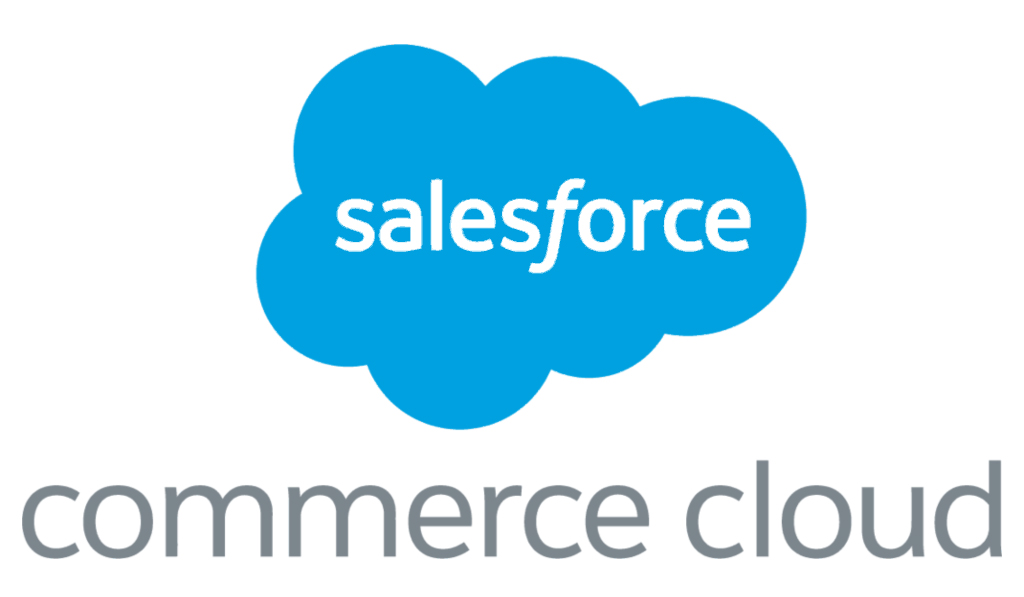Businesses must elevate their game to create seamless experiences across multiple channels in today’s fast-paced environment of perpetual change and advancement. It’s not just about meeting client expectations; it’s about staying ahead of the competition in a fast-paced industry.
To achieve this, firms must adopt a customer-centric approach, catering to their needs while also keeping existing customers delighted. According to Zendesk, a single negative encounter can prompt 61% of consumers to switch to a competitor. This underscores the importance of prioritizing customization, ease of navigation, and modern technology, leading to the emergence of headless eCommerce.
Headless eCommerce is a practical solution for businesses aiming to expand their brand presence and engage with customers through various touchpoints. By separating the frontend and backend experiences, businesses gain the flexibility to experiment with and adjust the customer-facing components of their online shop.
Now, let’s delve into what headless eCommerce is, how it differs from traditional eCommerce systems, and, most importantly, the advantages it offers. This blog will address these issues, empowering businesses to make informed decisions when selecting an ecommerce platform. Let’s get into the specifics.
Understanding Headless Commerce
Headless eCommerce is an innovative approach to building online shops. In contrast to standard eCommerce setups where the store’s design and functionality are intricately linked to the backend, headless eCommerce takes a different approach by keeping these two aspects separate.
In this setup, the frontend and backend of an eCommerce application operate independently, enabling eCommerce entrepreneurs to construct their online businesses precisely as they envision. Headless eCommerce liberates enterprises from previous design constraints, as the limitations of backend technologies no longer hinder it.
The presentation layer of the storefront is entirely isolated from critical activities such as inventory management, transactions, and shipping in headless eCommerce. This crucial distinction allows store owners to focus entirely on customizing their store’s appearance and enhancing the consumer experience without disrupting essential operations.
Furthermore, the separation of the front and back ends allows for swift modifications. Store owners can easily update the presentation layer without necessitating substantial changes to the backend processes, ensuring a smooth and efficient process for both store owners and consumers.
Hiring an experienced eCommerce development company ensures a seamless transition to Headless eCommerce, leveraging its full potential for your business growth.
Difference Between The Traditional Commerce And Headless Commerce
Let us examine the critical differences between Headless eCommerce and Traditional eCommerce:
Front-End Flexibility
Frontend developers in conventional eCommerce find themselves confined, compelled to operate within the confines of pre-designed templates. This limitation can render tailoring the user experience exceedingly challenging. Even seemingly minor changes may require delving deep into code complexities and backend services, resulting in time-consuming maneuvers and potential organizational liabilities.
In stark contrast, Headless eCommerce transforms the landscape significantly. Here, frontend developers wield greater power, allowing them to craft fully personalized user experiences with unprecedented freedom. What sets Headless eCommerce apart is its capacity to provide this creative liberty without disrupting the intricate capabilities of the backend. This radical liberation enables a tailored strategy that aligns closely with the business’s specific requirements.
In essence, while traditional eCommerce may restrict frontend developers with predefined limits and demand intricate code navigation, Headless eCommerce liberates them, fostering seamless harmony between creative customization and robust backend functionality. This bold shift not only enhances the user experience but also aligns the online presence with the evolving requirements and objectives of the business.
Personalization Without Limits
As a cutting-edge strategy, headless eCommerce allows businesses to create user experiences personalized to the demands of both end-users and administrative workers. On the other hand, traditional eCommerce platforms often provide fixed experiences, requiring a higher level of customization to accommodate particular requests.
This revolutionary methodology enables firms to develop interfaces that perfectly align with the tastes and expectations of their target consumers. The absence of established templates allows for more dynamic and individualized interactions, improving overall user satisfaction.
On the administrative front, Headless eCommerce enables the construction of interfaces that closely align with the staff’s workflow and operational requirements. This versatility ensures that backend processes run more smoothly and efficiently, resulting in higher productivity and simplified operations.
Traditional platforms, on the other hand, may impose constraints on administrative interface customization, potentially leading to inefficiencies and a less-than-optimal user experience for personnel operating the eCommerce platform.
Quick Time-to-Value
Backend logic and feature development consume a considerable amount of time in traditional eCommerce. Headless commerce, however, reshapes this dynamic, enabling a more pronounced focus on enhancing the customer experience. This streamlined approach results in a final solution at a significantly reduced cost, time, and effort.
In essence, Headless eCommerce provides unparalleled frontend freedom for customization and expedites time-to-value, rendering it an attractive solution for businesses aiming to deliver a cutting-edge and personalized online purchasing experience.
Also Read: How to Build an Ecommerce Website From Scratch, and Optimize It
6 Advantages of Headless Commerce for Online Store Owners
The main advantages that headless commerce can offer your company are outlined below:
Enhancing Customer Experience With Headless eCommerce
Headless commerce provides businesses with the opportunity to elevate customer experience to new heights. It equips you with the necessary resources to deliver an exceptional purchasing journey while maintaining consistency across all channels. Access to advanced customization tools allows you to personalize experiences without compromising the functionality of your store.
In the corporate landscape, clients take precedence. Increased revenue and customer loyalty stem from a contented consumer base. The objective of headless commerce is to ensure customers receive the best possible experience, fostering satisfaction and long-term loyalty to your company.
Agility And Flexibility
Headless commerce solutions provide a dynamic solution, enabling marketing teams to swiftly build various sites across multiple brands and divisions. Their support for emerging technologies enhances agility, allowing the companies to quickly adapt to changing client preferences and market needs. These platforms offer experimental freedom, empowering firms to innovate in shopping experiences and meet customer expectations.
Moreover, this is achieved without compromising the efficiency of backend processes. Headless commerce, essentially, strikes a balance between flexibility and stability, establishing a seamless environment for enterprises to navigate the ever-changing landscape of consumer involvement and market dynamics.
Omnichannel Experience
Customers increasingly expect a flawless purchasing experience, whether on their desktops, mobile devices, or through chatbots. While conventional solutions often fall short in providing comprehensive omnichannel capabilities, headless solutions swiftly empower businesses to establish frontends for emerging digital sales channels.
Businesses can ensure consistent experiences across all touchpoints by centralizing consumer information and building a robust API layer. This approach extends to upcoming commerce-centric technologies like smart kiosks and digital signs, simplifying adaptation and staying ahead in the ever-evolving landscape of customer expectations.
Improved Security
The security of an online business is crucial, and headless commerce offers a strategic solution. Businesses can effectively mitigate the risk of data breaches by compartmentalizing client data, payment details, and purchase history in the backend.
This approach facilitates the implementation of tailored security measures for each component, thereby enhancing overall protection. The flexibility to choose and customize security procedures not only safeguards consumer information but also ensures compliance with industry standards.
In today’s ever-evolving digital market, where cyber threats are constantly on the rise, embracing headless commerce becomes a proactive strategy to safeguard both sensitive data and the business’s reputation. This, in turn, fosters trust and confidence among consumers.
Faster Page Loading
Headless commerce holds the potential to enhance your ecommerce website’s speed by facilitating quicker loading times and delivering a superior user experience. Additionally, it contributes to improving your SEO. This is achieved through the intelligent separation of frontend and backend components. Moreover, organizations can optimize their code for peak efficiency, thereby boosting website speed even further.
Ease Of Integration
Headless solutions simplify life by seamlessly interacting with various tools through APIs. This versatility expands the possibilities for data utilization, simplifying communication and data transfer between systems. Moreover, since the user experience is detached from the backend, incorporating new features becomes effortless.
In summary, employing headless commerce development services enables companies to optimize their eCommerce potential. It facilitates limitless customization, smooth integrations, omnichannel excellence, rapid experimentation, and unparalleled agility. Embracing headless commerce is more than a fleeting trend; it’s a strategic move to stay ahead of the competition and craft exceptional client experiences in our constantly evolving digital landscape.
Also Read: Essential Guide To Starting An Ecommerce Website!
The Most Effective Headless Ecommerce Platforms
Shopify Plus
Consider Shopify Plus as your primary headless e-commerce platform. It is offered by a reputable firm that transforms various devices and apps into successful sales channels. Even if you’re not tech-savvy, the Shopify API enables you to set up shop virtually anywhere. Pre-built solutions and seamless connections with CMS, ERP, and CRM can assist you in establishing your online presence quickly.
BigCommerce
BigCommerce serves as your versatile partner for both B2B and B2C online shopping. Its proficiency extends to managing multiple storefronts for larger businesses, yet its sleek and user-friendly design also caters to smaller stores with fewer locations. Seamless integration with WordPress through the API and effortless interaction with Amazon, eBay, and Google further enhance its capabilities. If you appreciate using plugins to elevate your online experience, BigCommerce could be the ideal match for you.
Adobe Commerce
Adobe Commerce, formerly known as Magento Commerce, offers a comprehensive solution for customizing your e-commerce website. With multiple consumer touchpoints, you can effortlessly expand your business. Its seamless integration with Analytics, Experience Manager, and Creative Cloud enhances user experience. Moreover, its inventory management capabilities are excellent.
Salesforce CommerceCloud
Salesforce, the leader in customer interactions, is thrilled to introduce CommerceCloud—a robust solution designed to boost conversion rates and enhance your sales channels. This API-first ecommerce solution empowers you to leverage real-time data, delivering personalized and tailored consumer experiences.
Commercetools
Introducing Commercetools, Microsoft’s API-first digital commerce solution. Seamlessly sell across smartphones, the internet, and speech assistants. Easily manage your inventory through an intuitive interface that provides insights on what to sell and when. Commercetools offers connectors for payment, content management, and frontend development, making it a comprehensive ecommerce solution.
With numerous possibilities available, how can someone with limited ecommerce development knowledge choose the best option? One approach is to delve into each platform individually, investing significant time and effort. Alternatively, you can enlist the expertise of a headless commerce development business to streamline the process. They can help you understand your company’s requirements and guide you in selecting the optimal ecommerce platform from this impressive lineup.
Conclusion
In conclusion, the growing demand for headless ecommerce is driven by its numerous benefits, including tailored experiences, enhanced speed, and a diverse set of tools. The necessity is apparent as companies navigate the competitive landscape; transitioning from traditional operations to innovative solutions like headless commerce is crucial for standing out and thriving in today’s market.
FAQs
How does headless commerce contribute to a better user experience for clients?
Online store operators can craft highly personalized and responsive user experiences through headless commerce. This approach enables a more engaging and efficient purchasing process as the front-end can be enhanced individually without compromising back-end operations.
Can headless commerce adapt to the changing demands of an online business over time?
Absolutely, flexibility is a major advantage of headless commerce. As a company’s demands evolve, online shop owners can easily make modifications to the front-end or back-end without disrupting the entire system. This seamless scalability provides a future-proof solution.
How does headless commerce enhance third-party service and application integration?
By decoupling the front-end and back-end, headless commerce simplifies the integration of third-party services and applications. This adaptability empowers online merchants to effortlessly incorporate new tools, technologies, and services without impacting the core functionality of their e-commerce platform.
Are there any considerations when transitioning to a headless commerce model?
While headless commerce offers numerous advantages, it’s crucial to consider factors such as initial setup costs, potential development complexity, and the need for skilled developers. These challenges can be addressed through meticulous planning and a well-executed transition strategy.
How can online store owners determine if headless commerce is the right fit for their company?
Evaluating factors like the need for flexibility, scalability, and a tailored user experience can help online store owners ascertain whether headless commerce aligns with their business objectives. Seeking guidance from experienced developers and assessing unique business needs can provide valuable insights.
Is it possible to migrate existing e-commerce platforms to a headless architecture, or is starting from scratch necessary?
Both options are feasible. Existing e-commerce platforms can be transitioned to a headless design, but this requires careful planning and execution. Starting from scratch is an alternative for those seeking a comprehensive overhaul. The decision depends on variables such as the current system’s complexity, business goals, and financial constraints.










